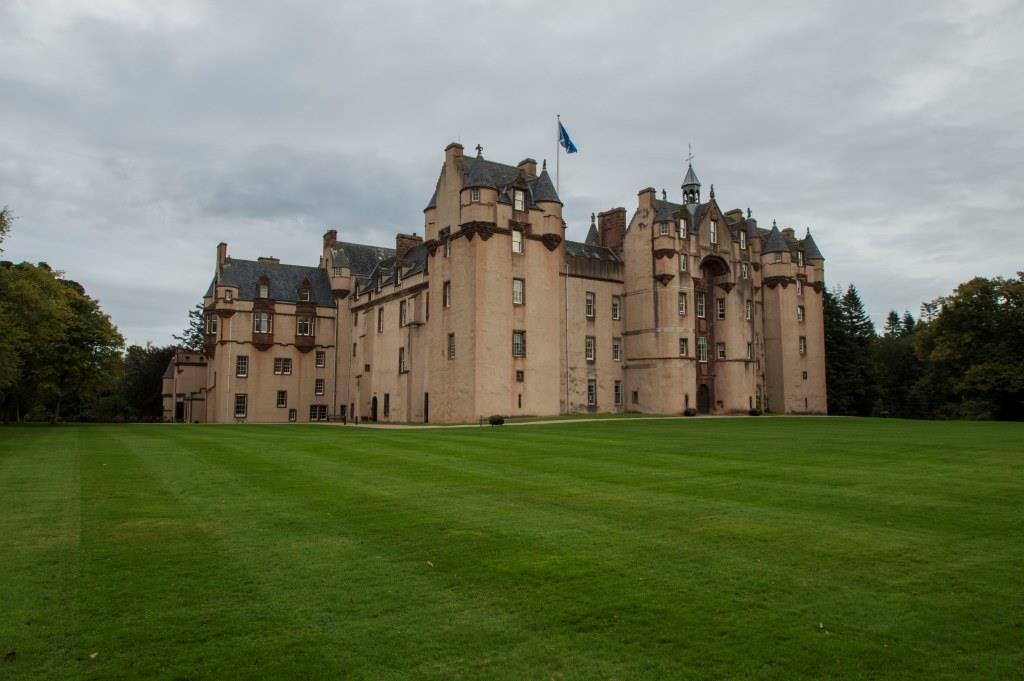Fyvie Castle

Fyvie Castle Details
Fyvie Castle, a much altered C13 courtyard castle now forming large C14-C19 L-shaped mansion. National Trust for Scotland.
- Closest To: Turriff, Oldmeldrum
- Access: Chargeable Public Access
- Grid Reference: NJ763393
Fyvie Castle is a large L-shaped mansion on the brow of a low hill overlooking the valley of the River Ythan in Buchan. It was strongly situated, with the river to the north and west and a low-lying marshy area to the east now occupied by Fyvie Loch. As the loch curves around towards the River, it is possible that in times of high water, the castle was on an island.
The buildings today are on the site of a castle which existed as early as 1211-1214, when it was visited by King William the Lion. The castle was a royal foundation and had a hunting-park associated with it as well as a small burgh, and a priory. It was also visited by Edward I in 1296, although no description of it is known. In fact, since it would have been destroyed by Robert the Bruce shortly afterwards, nothing is known of this early castle at Fyvie. Recent research has suggested that one corner of an old curtain wall lies beneath the south-western tower, which may suggest that the castle formed a courtyard of similar size to the buildings today.
The castle was granted to Sir Henry Preston in 1390, and he is traditionally said to have built the earliest part of the castle to survive, the Preston Tower (to the far right of the photograph) shortly afterwards. Sir Henry did not have any sons to succeed him, and one of his heiress daughters married a member of the Meldrum family, who are said to have built the Meldrum Tower, namely the tower in the foreground of the picture. In 1596, Fyvie was purchased by Alexander Seton, later Lord Fyvie, who is supposed to have built the twin towered main gatehouse. This at least is true as it is dated to 1599, and it is certain that Seton remodelled the upper parts of these towers at the least since they are clearly 16th century in style.
The castle had by this time developed into a substantial mansion, albeit with a military past. The east wall of the castle courtyard (almost 3 metres thick) was not demolished until the late 18th century, so it must have retained a more warlike appearance than today. A battle was fought here in 1644 between Montrose and the Covenanters, but this appears to have been the only significant military action the castle saw.
The Setons were forfeited in the late 17th century, and Fyvie Castle was purchased by the Gordon family in 1773, added the Gordon Tower at the northern end of the west range c1777, and removed all traces of the old castle curtain walls when setting out gardens. Finally it was purchased by the Leith Family in 1885, who added a final tower to the west of the Gordon Tower, that on the far left of the photograph. In 1984 it was purchased by the National Trust for Scotland, who still maintain the castle and grounds.
Official National Trust for Scotland page
Become a supporter of my work to access a more detailed history